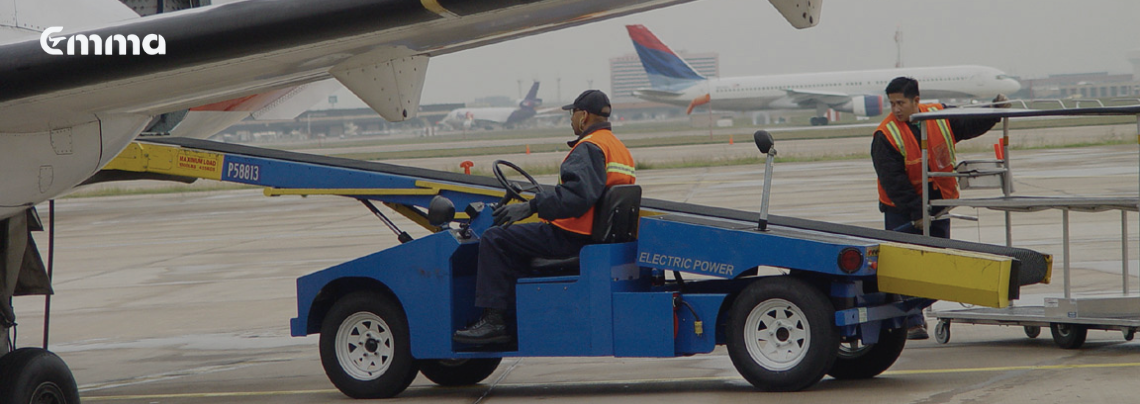Airport - A City That Thinks

By Ulla Koivukoski
They say an airport is a city that never sleeps. As a passenger when rolling out of the taxi and walking through the sliding doors into the airport, specifically in the busy tourist seasons, this becomes a reality. I may wish to have a business class ticket to avoid the chaos in all points that need to be checked in. I’m not alone with my wish. Only around 6% of the airline passengers fly in premium class in 2024. Hence, 94 percent, 41.1 billion passengers in 2024 went through the same tourist class hassle with queues at check-in, passport control, security check, seeking for the gate, running in the crowded corridors after realising that the gate was changed, and other stress generating incidents. Naturally, the situation varies in different airports, but this is the reality in most cases.
Most of the 4072 airports have their own processes, tools, and people using them. Often they also have several point solutions that don’t “speak” to each other. And that’s the problem. However, none of the airports work in isolation. They are heavily connected with each other and are depending on the incumbent systems they have invested in years back. But time passes and new needs emerge for different airport operation functions. New point solutions emerge to serve one function to avoid too exhausting development of the technology that may need to be replaced anyway in the near future.
The acceleration of technology advancement has been unprecedented in the past years and the cycle even speeds up now that the AI era has entered our lives, both professionally and privately. Typically, each airport control centre and team has its own tools, which over time have added “smart” systems to squeeze out efficiencies. Operators juggle several screens and countless tabs, reconciling numbers across siloed systems. They are not short of data; they are short of data that works together. Every new point solution adds another data dialect, another dashboard, and another database. They may bring incremental efficiency, yet at the same time increase complexity.
Years back, many industries repeated the mantra: data is the new oil. Airports sit on vast reserves of digital crude, raw data that’s valuable only if refined. What they need now is the refinery: a unified data ecosystem that turns information overload into intelligent decisions and actions, transforming operations from fragmented and reactive to seamlessly automated and predictive.
Let’s imagine an alternative reality. The doors slide open and I step into the terminal, the same terminal that earlier felt like organized chaos. But today, something is different. My phone buzzes after entering the airport: “Your bag drop is at Island 12, follow the walking guide. Security check at Lane B, follow the walking guide. Your passport was already scanned, and you only need to use your biometrics to enter the security line. Your gate is 9, follow the walking path with the info on specific shops and restaurants based on your preferred options you entered when booking the flight.”
I didn’t need to download another new app; the system recognizes me when entering the airport. It knows my flight and nudges me at the right time through messaging. No hunting for information, no second-guessing, or constant checking for any changes. Simply relaxing and focusing on my own stuff or entertaining myself while watching fellow passengers. Then a message pops up: “Gate moved to A7 for faster taxi at departure bank.” In the first scenario, that would have triggered a scramble in the crowd. Now the decision is visible to everyone in that virtual operations room: “Gate A7 shortens pushback during a weather squeeze.” I see the reasoning, and I trust it. Boarding starts on time and I’m there without rushing.
A tiny change in efficiency impacts all of us. Fewer connections are missed somewhere down the line, improving the passengers’ travel experience, reducing airlines’ costs, and enhancing the service experience airports provide. Is the latter scenario a sci-fi dream only? Is it possible soon? What should happen to get there?
The key term facilitating this dream is “collaboration”. Collaboration between different organizations within individual airports to build seamless processes between different operational teams. Collaboration between different technology systems and related data, regardless of who provides them. Collaboration between all the different service providers from booking systems to check-in, luggage management, boarding, take-off, and air traffic management to name a few.
Building a thinking airport isn’t necessarily about adding more technology; it’s about connecting what already exists. That means setting shared data standards and an open ecosystem that lets every system, vendor, and stakeholder plug in safely and equally. A true ecosystem where every process, every partner, and every passenger connects through a common digital language.
For me as a passenger, the real transformation isn’t in glass or steel. It’s in the silence between the systems, in data that finally collaborates, in AI that listens before it acts, and in people who can trust what they see. What used to be a maze of dashboards has become one shared horizon. The airport isn’t just automated; it’s learned how to think, so that my journey can simply move smoothly.
To make that real, the industry may need a trusted facilitator, a bridge between airports, airlines, technology partners, and policy makers, guiding alignment on data models, interoperability, and AI-driven decision frameworks. When we get that right, the passenger experience becomes effortless, operations become predictive, and the airport finally becomes what it was always meant to be: a city that truly thinks.

At EMMA Systems, we help airports make this vision a reality. Through collaboration, real-time visibility, and seamless data integration, we’re building the foundation for airports that don’t just operate, they think.
Contact our expert today to see how your airport can take the next step toward truly connected operations.


